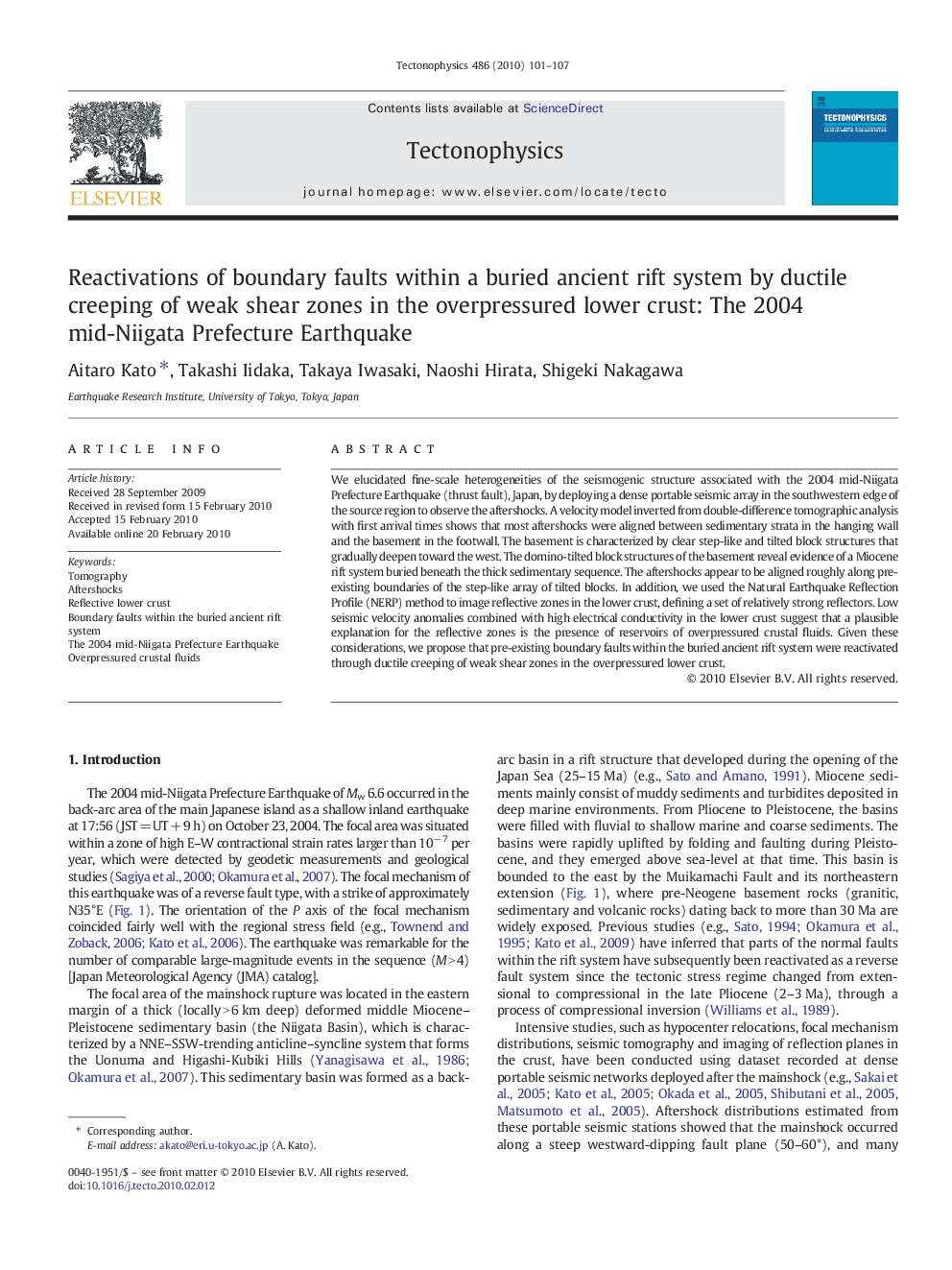| Article ID | Journal | Published Year | Pages | File Type |
|---|---|---|---|---|
| 4693624 | Tectonophysics | 2010 | 7 Pages |
We elucidated fine-scale heterogeneities of the seismogenic structure associated with the 2004 mid-Niigata Prefecture Earthquake (thrust fault), Japan, by deploying a dense portable seismic array in the southwestern edge of the source region to observe the aftershocks. A velocity model inverted from double-difference tomographic analysis with first arrival times shows that most aftershocks were aligned between sedimentary strata in the hanging wall and the basement in the footwall. The basement is characterized by clear step-like and tilted block structures that gradually deepen toward the west. The domino-tilted block structures of the basement reveal evidence of a Miocene rift system buried beneath the thick sedimentary sequence. The aftershocks appear to be aligned roughly along pre-existing boundaries of the step-like array of tilted blocks. In addition, we used the Natural Earthquake Reflection Profile (NERP) method to image reflective zones in the lower crust, defining a set of relatively strong reflectors. Low seismic velocity anomalies combined with high electrical conductivity in the lower crust suggest that a plausible explanation for the reflective zones is the presence of reservoirs of overpressured crustal fluids. Given these considerations, we propose that pre-existing boundary faults within the buried ancient rift system were reactivated through ductile creeping of weak shear zones in the overpressured lower crust.
